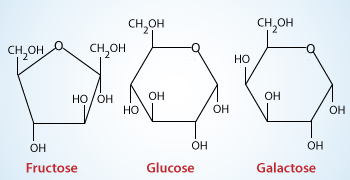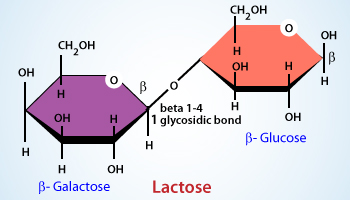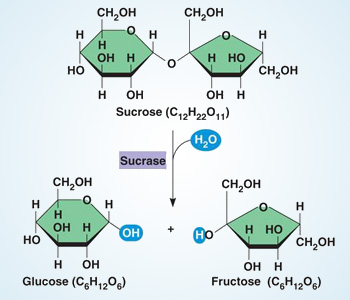
Carbohydrates are the polyhydroxy aldehydes or ketones with molecular formula (CH2O)n. Carbohydrates can be further classified into monosaccharides, disaccharides, oligosaccharides and polysaccharides.
Monosaccharides:
Monosaccharides are the simplest carbohydrates that can be categorized into aldoses (containing an aldehyde group) and ketoses
(containing a keto group). They may contain pyran ring like glucose and galactose or a furan ring like fructose. The generic name
of monosaccharides contain the suffix '–ose'.
Monosaccharides can be further sub–classified according to the number of carbon atoms present in the molecule. For instance, a monosaccharide containing three carbons is called triose and containing four carbon is called tetrose.

Disaccharides:
Disaccharides are composed of two units of sugar molecules. For example, lactose is made up of one unit of glucose and one unit
of galactose, maltose is made up of two units of glucose etc.

Oligosaccarides:
Oligosaccarides contain two to ten monomeric units, whereas polysaccharides are composed of many sugar units.
Cellulose, present in the plant cell wall, is a classic example of a linear polysacchride consisting of several units of
β (1 → 4) linked D–glucose. It provides the rigidity and tensile strength to the plant cell.
On hydrolysis, disaccharides and polysaccharides are broken down and produces their monosaccharide constituents.

Significance of carbohydrates:
- Carbohydrates are the rich and instant source of energy. Plants and animals store energy in the form of starch and glycogen respectively.
- Sucrose and fructose are the natural sweeteners.
- Carbohydrates are one of the major macromolecules present in the living organisms. They are present in cell membrane in the form of glycoproteins or glycolipids. They act as receptors and are the potent target sites for many drug molecules.
- Immunoglobulins are the glycoproteins that provide protection against several infections.
- Carbohydrates (cellulose, chitin) confer structural stability to the living cells.